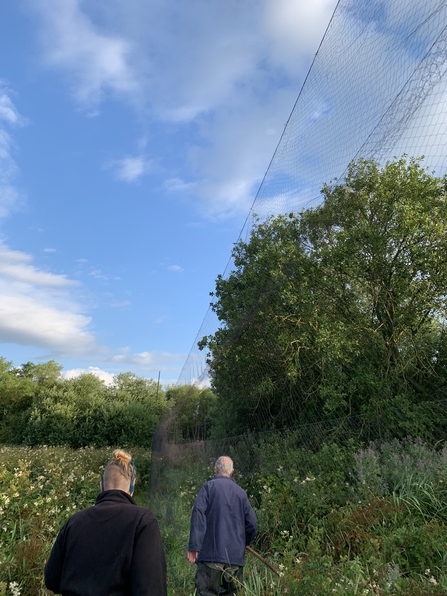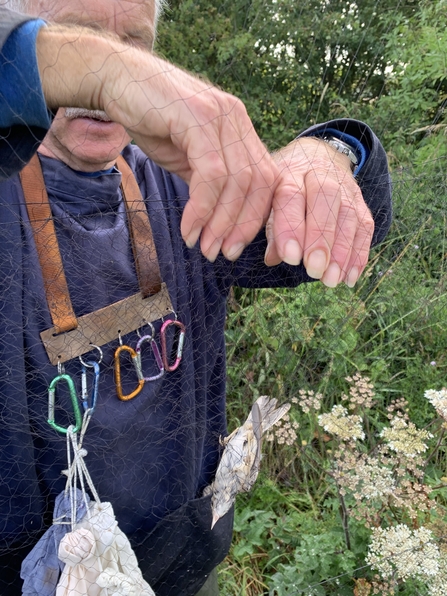I got the email at 19:14 on a Tuesday: Martin would be bird ringing at Rainton on the Thursday, 6am, and if I wanted to join him I would need a pair of wellies, a chair, and some anti-midge cream. Finally, after having to turn down three similar invitations due to other commitments, my diary was open. And so I met Martin on the Thursday, at 6am, with my wellies and a chair (I would later regret not heeding his warning about the anti-midge cream), ready and excited for my first bird-ringing expedition.
Joined by my Low Barns trainee counterpart, Heidi, the three of us set off through areas of Rainton I had never stepped foot in before, all the while following a faint trampled path through the undergrowth. We were armed with several canvas bags, contents yet unknown; a long forked stick; and what to me looked like a collection of very long tent poles. All of a sudden, we came to a stop along our path. Heidi and I watched curiously as Martin took a tent pole, stuck it in the ground, and looped on to it a black mass of netting which he had pulled from one of the canvas bags. A second tent pole was then fitted atop of the first. Curiosity turned into mild astonishment as we watched Martin reach out into the undergrowth and pull out a guyline as if from thin air, which he used to secure the tent pole. After repeating such seamless assembly a couple of times along the path, Martin took the long forked stick and hoisted the netting to the top of the poles, revealing a long expanse of fine netting approximately 18m wide and 3m tall above our shoulders. It was revealed to us that this was known as a mist net, and was the key to catching the birds.














